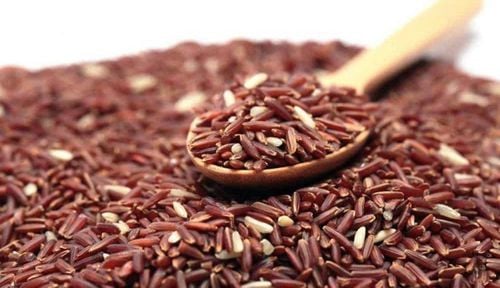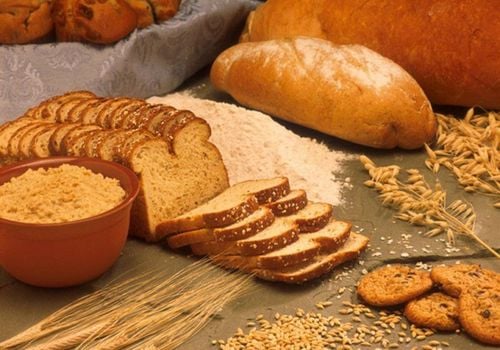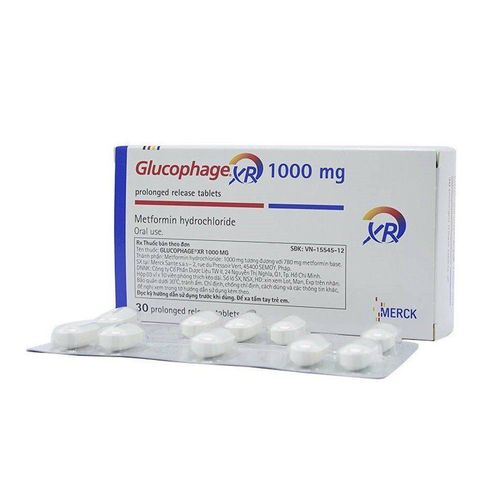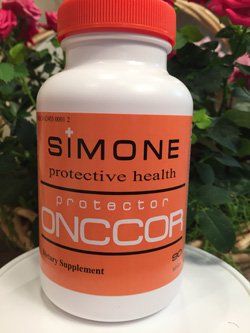This is an automatically translated article.
Quinoa has been used for over 5000 years and is still very popular today thanks to its impressive taste and nutritional profile. Organic quinoa is packed with fiber, vitamins, minerals and antioxidants, and is a great source of protein and is gluten-free. Quinoa seeds are not only nutritious, but come in a variety of colors, each with subtle differences in taste, texture, and nutritional content. In particular, red quinoa is a great choice.1. What is Red Quinoa?
Red quinoa is derived from the flowering plant Chenopodium quinoa in South America. Uncooked red quinoa seeds are oval, flat, and crunchy. Once cooked, they swell to form small spheres that have a soft but chewy texture. Although known as red quinoa seeds, these seeds can sometimes be more brown or purple in color.Quinoa is often referred to as a whole grain but in fact they are pseudocereal (pseudocereal), the reason, because Quinoa does not grow on grass like wheat, oats and barley. However, red quinoa in particular and quinoa in general are both eaten and processed like traditional grains. Red quinoa is also naturally gluten-free, so it's a very healthy option for people with Celiac disease or gluten sensitivity.
2. Nutritional value of Red Quinoa
Red Quinoa seeds are always in the group of pseudo-cereals with high nutritional content, containing a lot of fiber, protein, important vitamins and minerals. In addition, red quinoa is a rich source of manganese, copper, phosphorus and magnesium. Estimated one cup of cooked red quinoa seeds (about 185 grams) will provide:Calories: 222 calories Protein: 8 grams Carbs: 40 grams Fiber: 5 grams Sugar: 2 grams Fat: 4 grams Manganese: 51 % Daily Value (DV) Copper: 40% DV Phosphorus: 40% DV Magnesium: 28% DV Folate: 19% DV Zinc: 18% DV Iron: 15% DV With the same serving, red quinoa also provides provides more than 10% of the daily requirement of the B vitamins (including Thiamine, Riboflavin and Pyridoxine), all of which are essential for brain function and metabolism. Notably, red quinoa seeds are also higher in protein than many other grains such as wheat, rice and barley. In fact, it's one of the few plant foods that contain all 9 essential amino acids, including Lysine, which most grains lack.
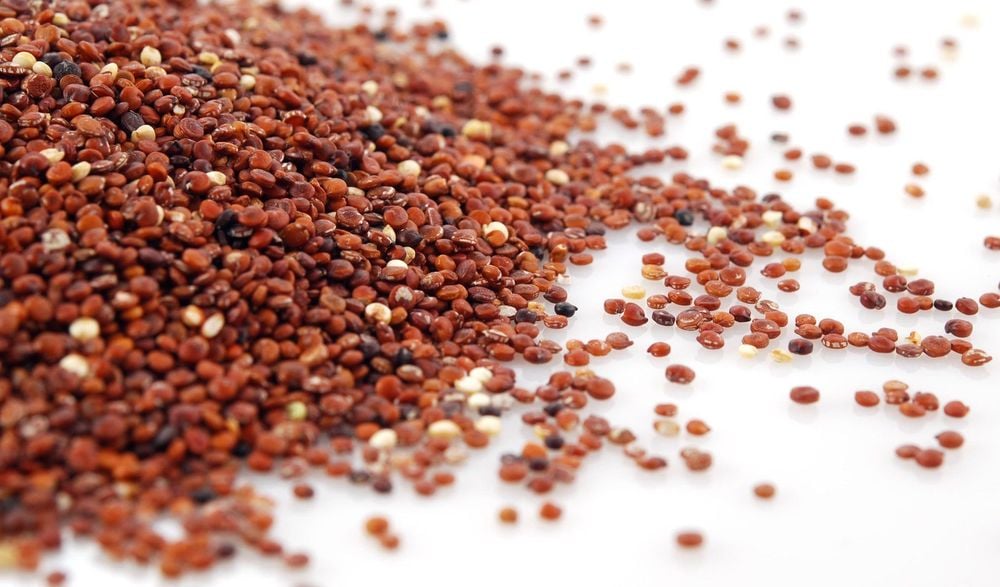
Hạt Quinoa đỏ là loại ngũ cốc có hàm lượng dinh dưỡng cao
3. Health Benefits of Red Quinoa
There are currently not many studies that specifically evaluate the health benefits of red quinoa seeds. The majority of current research only evaluates the benefits of its ingredients, as well as that of Quinoa in general.3.1. Rich in antioxidants Regardless of color, quinoa is a rich source of antioxidants that can protect or reduce cell damage caused by free radicals.
In a study on the antioxidant properties of 4 colors of quinoa such as white, yellow, red purple and black, red quinoa seeds were evaluated to have the highest antioxidant activity. It is especially rich in flavonoids, which are plant compounds with antioxidant, anti-inflammatory, and anti-cancer properties. In fact, one study observed that cooked red quinoa had significantly higher levels of total polyphenols, flavonoids, and overall antioxidant activity than cooked yellow quinoa.
Red quinoa especially contains high levels of 2 types of flavonoids:
Kaempferol. This is an antioxidant that has the potential to reduce the risk of chronic diseases, including heart disease and some cancers. Quercetin. This antioxidant can protect against many serious diseases such as Parkinson's disease, heart disease, osteoporosis and some types of cancer. In addition, red quinoa seeds contain plant pigments with antioxidant properties such as betaxanthin (yellow) and betacyanins (purple), both of which are betalain pigments. Betalains have been shown in vitro to have powerful antioxidant effects, protect DNA against oxidative damage and reduce cancer risk. However, human studies are still needed to confirm these effects.
MORE: What foods are antioxidants found in?
3.2. Lowers Heart Disease Risk The betalain pigments in red quinoa may also play an important role in heart health. In one study, feeding mice with diabetes 91 and 182 grams of betalain extract per pound (200 and 400 grams per kilogram) of body weight, respectively, resulted in a significant reduction in triglycerides, as well as cholesterol. total and LDL (bad) cholesterol, while increasing HDL (good) cholesterol.
Red quinoa may offer heart health benefits and is considered a whole grain. Many large studies also link whole grain consumption with a reduced risk of heart disease, cancer, obesity, and multi-cause mortality.

Sử dụng hạt Quinoa đỏ có thể giúp bạn hạn chế nguy cơ mắc bệnh tim
Red quinoa contains both insoluble and soluble fiber, both of which provide unique benefits to the body:
Soluble fiber absorbs water and turns into a gel-like substance during the process. digestion, thereby increasing satiety. It may also improve heart health by lowering total cholesterol and LDL (bad) cholesterol. Insoluble fiber helps maintain gut health and plays an important role in preventing type 2 diabetes. 3.4. Nutrient-rich and gluten-free As a pseudocereal, red quinoa does not contain gluten, which is commonly found in traditional grains such as wheat, barley and rye. Therefore, it is a very healthy option for people with Celiac disease or gluten intolerance.
Quinoa is generally a good source of fiber and contains many important minerals. Adding red quinoa to your diet can significantly improve your overall nutritional intake if you're following a gluten-free diet.
3.5 How to Incorporate red quinoa into your diet Red quinoa often has a stronger, grainier flavor than regular white seeds. Here are some suggestions for incorporating red quinoa into your daily diet:
Cook red quinoa in place of rice. Mix with vegetables to make salad. Cook quinoa porridge for breakfast. Sprinkle quinoa in salads and smoothies for garnish and extra protein. As with other types of quinoa, rinse red quinoa seeds before processing to remove the bitter outer coating, also known as saponins. Additionally, rinsing the quinoa seeds also helps reduce plant compounds called phytates and oxalates. These substances can bind certain minerals, making it harder for your body to absorb.
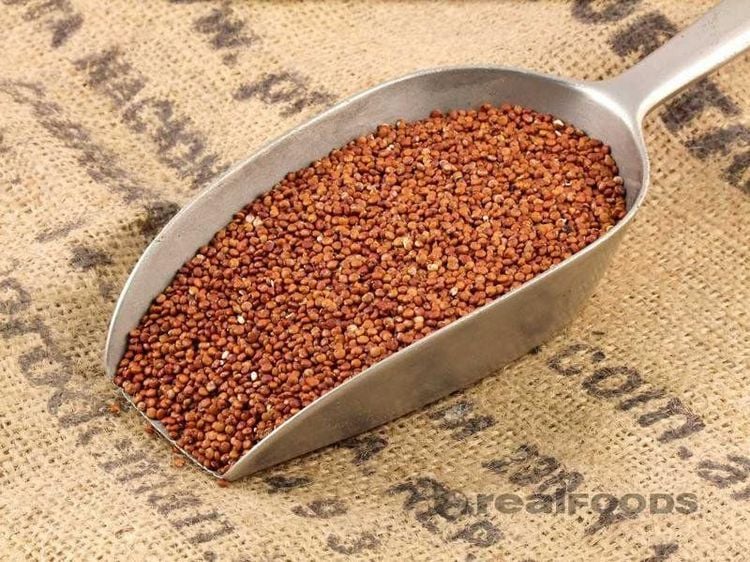
Hãy nhớ rửa sạch hạt Quinoa đỏ trước khi chế biến
Red quinoa is rich in protein, fiber, and a variety of important vitamins and minerals. Plus, it has a higher antioxidant content than other types of quinoa, providing certain benefits for heart health. Therefore, you can consider adding a serving of red quinoa to your family's daily meals.
Please dial HOTLINE for more information or register for an appointment HERE. Download MyVinmec app to make appointments faster and to manage your bookings easily.
Reference source: healthline.com




